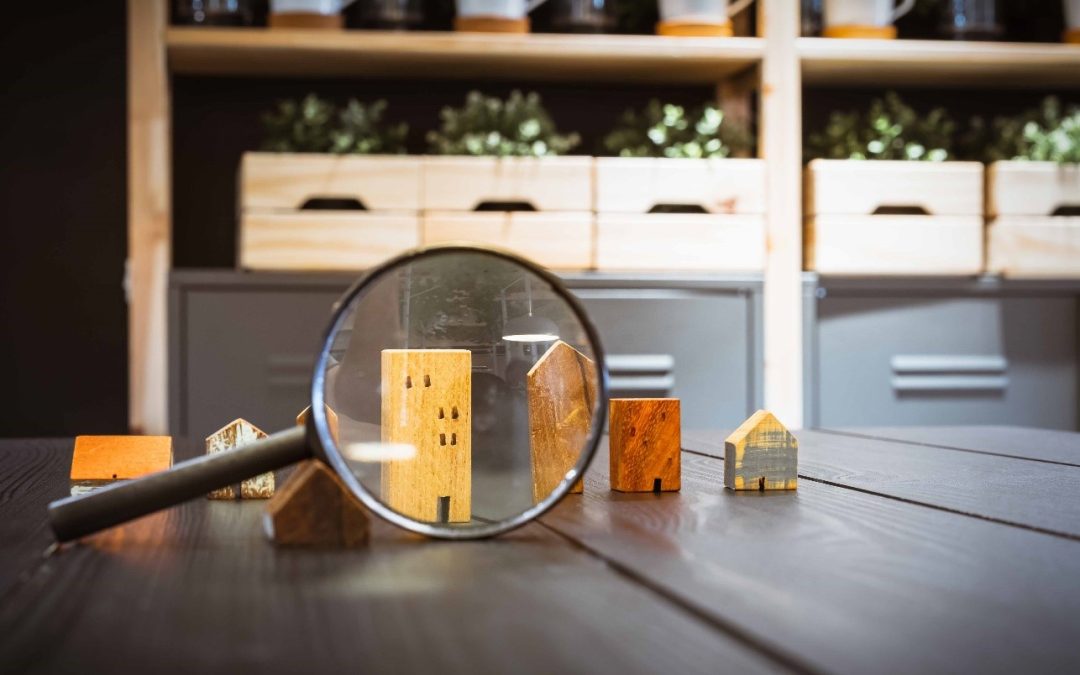Have you ever realized that most houses on the market are pre-owned? Unless you’re looking at a new construction (or planning to build your own home), there have been previous owners for every property on the market. Just like anything else, buying a pre-owned home comes with its own risks. Have the previous owners taken good care of the property? What condition are the mechanicals in and how much more life do they have? These are just some of the questions that might come to mind when looking for homes.
Just like you’d want to inspect a used car before purchasing, you’ll want any home inspected before you make the investment and find yourself living with a home that might have some underlying issues you didn’t spot on a quick walk through! Cosmetic flaws and minor repairs are common, but are also easy to remedy, and shouldn’t be a deal breaker when you find a home that otherwise meets your needs. That said, there are some problems that should probably make you reconsider placing an offer, should they show up on a home inspection report. Watch out!
- Leaky and Rundown Roofing – Check for signs of current or past water damage. According to Forbes, “The national average cost to replace a roof is around $8,000, with most people spending in the range of $5,500 to $11,000.” If the roof has been leaking for any period of time, that water damage could be pervasive, damaging both cosmetic and structural elements of the home, and could see repair costs exponentially exceed those of replacing a new roof.
- Poor Drainage – There are many signs that a property has drainage issues, and you don’t need a home inspector to point them out. If you spot water stains, mildew, or mushy ground outside your home, know that water is getting- and staying- in places it shouldn’t be. Depending on the cause of the drainage problems, costs can be very expensive, and the damage can affect everything from a home’s siding to its foundation.
- Foundation Issues – What are the signs of foundation damage? They can include cracks around doors and windows or uneven floors. Foundation problems can cost thousands of dollars to correct, and potentially mean the property you’re looking it is unsafe to live in.
- Plumbing Problems – While you’re going through a house, ask to turn on sinks and faucets. Make sure water turns hot quickly, and that fixtures drain properly. If you notice a sink that’s slow to drain or water that doesn’t warm up, chances are there’s some major plumbing issues in the house that should be considered carefully and further explored.
- Pest Infestations – Pest infestations are more than just an annoyance: they can seriously damage your home if left unattended. Termites and other wood-eating pests can cause extensive damage that can be hard to find and costly to repair.
- Mold –That “musty” smell could be due to hidden mold and further investigation should be taken as mold can be dangerous to the health of the family. Depending on the type of mold, it can be very difficult to remove entirely. Mold also is a sign that the home has had humidity issues, and could be indicative of a previous problem (bad plumbing or poor drainage) that was improperly repaired or neglected.
- Faulty Heating System – Get a professional to inspect the heating system of a home before you buy. A faulty furnace could be an expensive fix and a big fire hazard.
- Electrical Wiring – Damaged or improperly installed electrical work can be one of the biggest expenses for a new homeowner- and it can be easily overlooked. Check light switches and outlets for proper function, and don’t forget to have junction boxes and appliances inspected by the professionals. Older homes may need to be rewired in order to bring them up to modern code and safety standards, and will need to be evaluated by professionals. Don’t think that electrical problems only happen in old homes, as even new construction properties can have electrical problems. Accidents can happen- but you don’t want to be the one to pay for them.
- Structural Damage – Perhaps the biggest red flag is visible signs of structural damage in a home. Sagging joists, rafters, and door jambs can be evidence of larger issues. If you feel the floor shift under your feet, you may want to walk away.
- Deferred Maintenance – A home in poor condition could be hiding more serious issues due to chronic neglect. It will be up to you to determine if the previous owner simply lacked the funds or inclination to fix these problems, or if they are just the first signs of many other problems to be experienced down the line.
Home inspections are an important part of the home buying process because they serve to protect you – giving you information about your investment you normally would not have on just a walk through. It is an important part of the process that should not be skipped or taken lightly.


